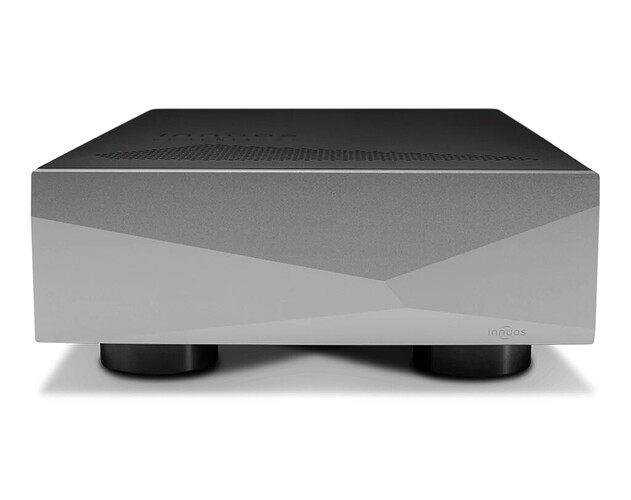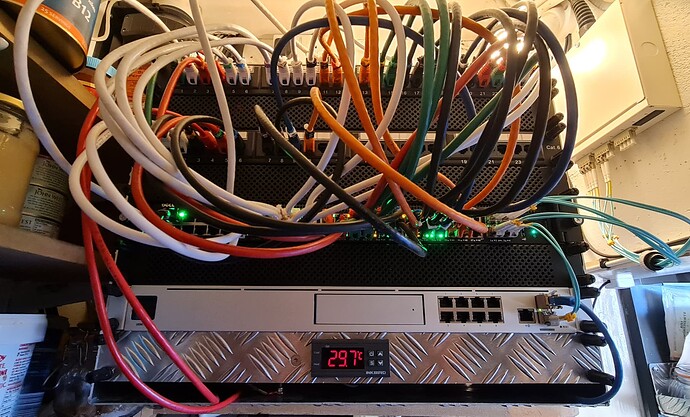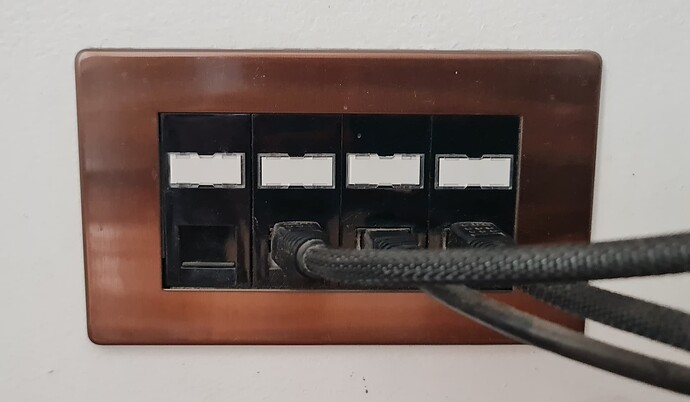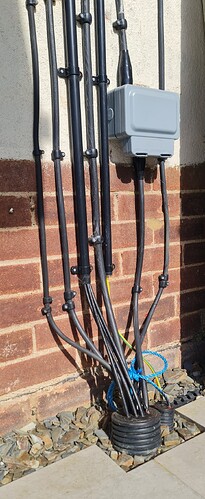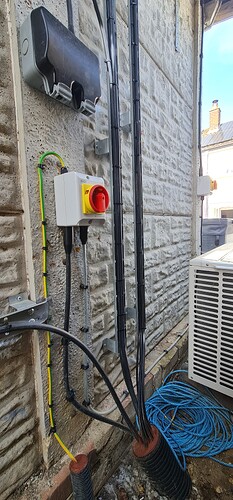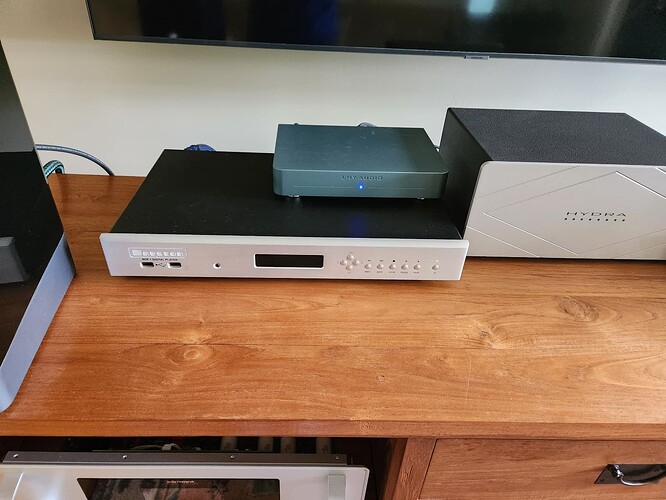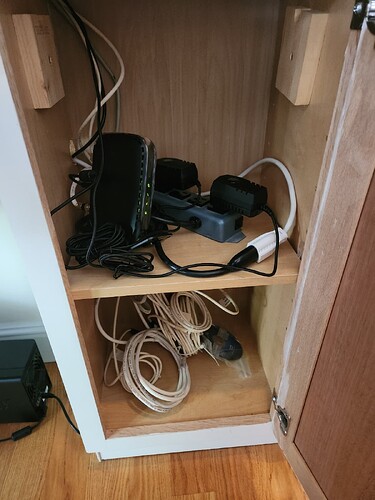Apologize that I sort of asked this before and never quite got clarity. My Roon core is currently a dedicated laptop that communicates with my LAN wirelessly. My LAN has an ethernet cable that runs into my music streamer. I get that the LAN cable can carry noise into the system, and I am doing things to minimize that. But the core - an inherently noise laptop - is NOT contributing noise because of the wireless connection (I hypothesize). The laptop is mere feet away from the router, and I do not have any wireless connection strength issues. I don’t see any reason to connect the core with an ethernet cable, which will carry noise. Am I looking at this correctly? Thanks.
Whether you use wired or wireless LAN has no effect on SQ.
Roon recommends that the Core is on wired ethernet because it carries a lot of traffic. Music files coming from streaming services (if any) and the decoded PCM samples to one or more zones. Wifi can’t transmit data in both directions at the same time, so there is a lot of competition for bandwidth, and it’s notoriously subject to interference and varying quality.
All of this is much more important that any hypothetical, unproven, and very unlikely issues (I’m trying to avoid saying “impossible” but maybe I shouldn’t) with ethernet “carrying noise into the system”. (And if ethernet did that, who’s to say that wifi antennas and so on don’t? Either is possible in a world where the earth “could” be flat, and very unlikely in a world where it isn’t)
Follow the recommendations of the people who built Roon and there is no reason NOT to use an ethernet cable for the core, and many reasons to do so. If the wifi is good enough to handle the Core’s network load, at best the wifi won’t cause issues with dropouts and glitches. Neither ethernet nor wifi will have an effect on SQ as such.
Thanks. You got at the nub of what I was asking with: “(And if ethernet did that, who’s to say that wifi antennas and so on don’t?).” LAN network noise may or may not be a material thing. A number of people say that it is, and that is why to use linear power supplies on your network switch and other network-attached items. Assuming there is something to the notion that my LAN is delivering more than 0’s and 1’s into my streamer, the question relates to how noise gets on to the LAN. That is, is noise from my laptop added to the LAN by virtue of the fact that the laptop is connected to the LAN with a wire? If so, then the wireless 0’s and 1’s are not encumbered with that noise, and that noise does not hit the wireless antenna. If the wireless anternna adds its own noise, then you are right - whatever gain was achieved faces a counteractive force.
One can find a number of people who say basically anything ![]()
Oh yeah? Well that’s not what “they” said! ![]()
So you think there is nothing to network noise? I made a small investment in my system (ifi low noise power supplies on router and modem, and LHY 8 port switch), but I did not do any before and after testing to see if I could tell a difference - certainly there was no night and day change.
A completely pointless audio superstition, reminiscent of the Melanesian cargo cult activities seen after the second World War, reeking of sympathetic magic.
This is nonsense promoted by people who want to sell expensive things.
I’d say that yes, designers of network technology should take care that the physical layer where the current transmits the bits does not interfere with the electronics in endpoints. But that’s a basic requirement and they do, or they wouldn’t be very successful in designing network technology. Similarly, audio device designers should take care that they follow the specs and take the same care.
IF (big if) ethernet can affect endpoints, it could conceivably only affect components with analog parts, like DACs. Inherently fully digital computers like a Core really can’t.
As for my “can find a number of people”, it was only half a joke. Clearly a number of people saying something is not sufficient evidence. If it was, we would all believe that the world is flat, but also that it is round and hollow and reptiles live on the inside who have replaced all our politicians, that everyone who was vaccinated for Covid died in September 2021, and so on and so forth. All of this and more was/is said by a number of people, and we don’t consider it true just because of that.
You are just shaking all my fundamental assumptions to the core! ![]()
I imagine you and Bill Janssen have not yet placed for your orders for an Innuous Phoenix network switch (only $3700…).
Only after I get may Taiko server which is two NUCs and some software for 37K ![]()
Cheapskate! No self-respecting audiophile would store their precious music (both Bela Flek *and Diana Krall – do audiophiles actually listen to anything else?) on anything cheaper than a Wadax!!
There’s no sound quality reason to not operate your Roon core wirelessly, though there are technical reasons. Roon is a heavy network user, and may struggle on WiFi depending on the number of devices connected to you’re WiFi, what they’re doing and also if you have other WiFi networks in your vicinity (neighbours, for example) crowding the same channels.
Claims of “noise” over ethernet are highly exaggerated, IME and wholly unsubstantiated. Some swear blind that they hear improvements from “audiophile” network components and accessories, though no one seems to have done any properly blind comparisons to eliminate expectation bias and validate these claims. It’s all anecdotal. Anyone who has tried to introduce audible noise via ethernet in any controlled testing seems to have failed to produce any measureable differences.
Succinctly, audio ethernet is snake-oil.
We even had a thread (fortunately closed now) extolling the virtues of single-mode over multi-mode fibre for audio data. A manufacturer representative was complicit in perpetuating the discussion. As someone with a background in fibre optics dating back to the 80s, I find the very notion utterly preposterous. No one other than deep pocketed audiophiles worries about this stuff, because it’s irrelevant. It only rears its head in audio because someone wants to sell you an expensive solution to an imaginary problem. People buy into the snake oil, get up on their soapboxes and spread the gospel. The popular audiophile press is just as guilty, and gives glowing reviews of this cr@p in exchange for advertising revenue…
I have an ethernet setup which is utterly utilitarian - enterprise managed switches with PoE. Endpoints are PoE powered RPi 4Bs. I can pull a -120dBFS 1kHz test track into audibility via my Benchmark DAC/Pre/Power amps (very low noise and high gain) with the volume close to max, so the noise floor is very very low.
If I played music at that volume setting (380 W per channel), my ears would bleed and I’d melt the voice coils in my speaker drivers. Whatever “noise” is present from ethernet is way below any threshold of audibility.
There are various white papers around making absurd claims, including one by John Swenson, designer of the UpTone Audio EtherRegen, which claims ethernet noise (amplitude noise and phase noise) “modulates the ground plane in the DAC” leading to compromised sound quality. To date, despite numerous requests, he has not provided a shred of measurement evidence to back up his claims. He continues, however, to cash in by selling these units to the gullible. Phase noise is another term to describe jitter. Ethernet is immune to jitter - the data is buffered (and validated and checksummed) at every interface, so its ultimately asynchronous. To have any effect, timing variations would have to be large enough to corrupt data. Ethernet protocol would request retransmission of the corrupted data, and if there wasn’t sufficient time, the offending packets would be “dropped” leading to gaps and interruptions in playback.
I don’t appreciate all this denialism Graeme - next thing you will probably say that I spent too much on power cables.
![]()
![]()
![]()
Thanks for the explanation. I’m glad I limited my foray into network upgrades to <$1000, though you all would probably tell me even that was a mistake!
Cheers.
![]()
![]()
![]()
The LHY is a nice looking switch to sit on a hi-fi rack, it’s based on the the Linksys LGS108 (a competent 8-port full backplane switch) and for the level of mods, it represents pretty good value for money compared to a few others I could mention. Items around double that price based on a very lightly modified $30 Zyxel!
The mods make no difference to audio performance, but it comes in a nice machined alu case, which isn’t cheap to fabricate and has an integral power supply with an IEC like proper grown up switches do. The DC SMPS that come with most switches I find are often wider than a UK plug, so you lose 3 outlets on a strip block with one plugged in!
Clock accuracy spec for ethernet is 50ppm; most basic XOs achieve better than 25ppm. That’s plenty good enough. TCP/IP is buffered and packets don’t even have to arrive in the right order - the network interfaces take care of the reordering if that happens. Ethernet is inherently bit perfect by design.
My biggest caveat with ethernet is cables - avoid any of the fancy shielded stuff. The ground connections they make between devices can create ground loops and generate audible hum.
Cat6 UTP is all you need for Gbit. Arguably, Cat5e is all you need for Gbit - both Cat5e (100 MHz) and Cat (250 MHz) will carry Gbit over up to 100m of cable. Cat6 gives the addition of 10Gbit capability up to 55m, but it’s cheap enough, easy to work with and gives a good degree of future-proofing.
This is my cupboard under the stairs:
All Cat6. If a device has an ethernet port, it’s cabled. Very little rides on the WiFi. The fibre (10Gbit x 2) connects to the Synology Rackstation in my garden “Mancave”, 40 metres away. Besides the Roon core, it supports file sharing, Plex, a bunch of security cameras and remote off-site backup.
Fibre is (relatively) cheap and easy for high bandwith over appreciable distances.
At home, at work and in our two holiday homes, I exclusively use wireless LAN connections - simply out of convenience, not because of any alleged SQ differences. Zero problems. Roon feels snappy and works absolutely reliably. My Core sits on a MacBook, and 99% of my music is locally stored (internal and external SSDs).
The LHY also perfectly fits the check “reduce encertainty” box, i.e., yes, a nice piece of hardware for the money, and of the 100 things that might affect my SQ, I can now cross off the “plebian switch” line! ![]()
This will probably open pandora’s box, but I know even less about networking that audio generally :-), so can you explain that hardware a bit? I looks like a lot of the wires just loop from one switch(?) into another? What is the diamond plated box, what are the thin blue cables? And if you go with a heavy wired approach like this, you basically needed to do a major remodel at some point, correct? That is, one cannot easily go back and add wires for security cameras etc without having i) wired the heck out of everything when the walls were open or ii) causing a lot of work and mess if doing it after.
Bottom is a plate which just holds a basic relay operated temperature controller. It stops and starts the cooling fans atop the enclosure and the 100mm axial extraction vent to pull the warm air out of the cupboard and vent it to outside.
The silver box above is a Ubiquiti UDM-Pro router. Takes the incoming/outgoing Gigabit internet, manages my access points, VLANs, allocates all of the IP addresses to devices on the network, manages all of the port forwarding for Roon ARC, remote access to the security cameras, and a bunch of other proper geek level stuff.
Above that with the lights is the Dell X1052P managed network switch.
The thin blue connectors are OM3 multi-mode fibre (10Gbit). The UDM-Pro only allows full throughput with Intrusion Prevention enabled on the 10Gbit port, so the short one connects it to the switch.
The other thin blue leads are the patch leads that connect to the armoured 8-core OM3 out to the garden office. 2 x 10Gbit go to the Synology Rackstation in a link aggregated 20 Gbit connection. The other connects to the switch in the office, which in turn connects to the desktop computer, access point, printer etc.
Both switches have a lot of ports and quite a few Power over Ethernet ports for powering access points, security cameras etc. A single ethernet cable carries data and power greatly simplifying cabling.
Above the switch are two patch panels - the cabling throughout the house goes into the back of these and the patch leads (various coloured and numbered short leads) connect the patch panel outlets to the switch. I have a detailed list of where every cable goes, what it’s connected to, MAC address, IP address etc.
The cupboard is just below the floor in the upstairs hallway, so it’s fairly easy to gain access and run additional cabling. Every room in the house has ethernet outlets like these:
A few cables go up to the loft for the solar PV inverter, upstairs wireless access point and the Sonos in the bathroom and there are backup Cat6 F/UTP cables ducted out to the office alongside all of the power cables and fibre:
I like to do all of my stuff “industrial grade”! ![]()
I think for your purposes @Graeme_Finlayson setup invokes Arthur C. Clarke’s third law
“Any sufficiently advanced technology is indistinguishable from magic” ![]()
Pshaw! Mere child’s play. Here is what a true network closet looks like. And Graeme has already admitted that he cannot touch me in terms of having a cool network switch visible on his audio rack! ![]()
![]()
Graeme, I’m sure we would salivate at getting more of a tour of the mancave…
We are not worthy…
